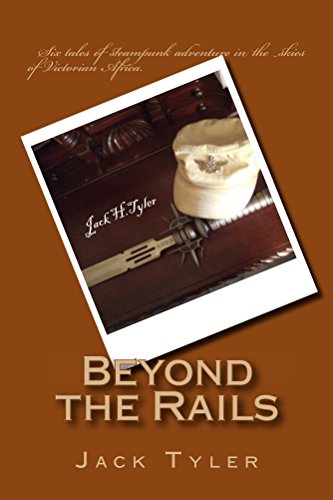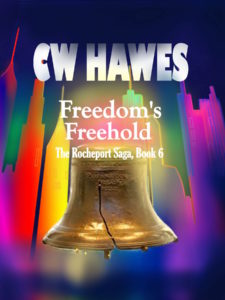A couple months ago, fellow author Jack Tyler wrote a blog post entitled “The Right-Brained Writer”. Part of the post dealt with Planners versus Pantsers. That is, those writers who plan the story out ahead of time and those who “fly by the seat of their pants”.
Jack wrote he was in the former camp. (I, by the way, am firmly in the latter one.) He went on to write because he was a Planner, he was right-brained. Could be. I don’t know. Supposedly, right-brain dominant people are creative and left-brain dominant are logical. I think writers are simply brained. They must be creative and they must be logical. Writers must be creative to make up their worlds and they must be logical, because in the real world things don’t have to make sense — but readers demand that a fictional world make total sense.
I think whether one is a Pantser or a Planner has more to do with one’s approach to life than whether one is creative or logic dominant. I don’t like authority. I strongly resist being told what to do. I like structure, but it must be organic rather than imposed. I see outlining as imposing structure, which to my mind is counter to the organic creation of story.
Planners, though, it seems to me, dominate academia. Plot your story is all I ever heard in writing classes. For Planners, outlining is a way to organize unruly thoughts. However, if you have to tell yourself the story to outline it — why don’t you just write it down?
I’ve tried outlining my stories. After all I was told I had to. My mind, however, totally freezes up. I can’t even finish the outline. I’ve tried brief sketches of chapters and scenes. I’ve tried storyboarding. Again, my mind freezes up and I can’t even finish sketching out the story. Trying to plan my writing nearly destroyed my nascent “career”. (I put career in quotes because at present I’m a hobbyist. Which means I ain’t making any money yet.)
I have more aborted writing projects than Carter’s famed little pills, or leaves to be raked off the lawn on a Minnesota autumn day. Planning didn’t work for me. In spite of all those well-meaning How-to books on writing.
The realization I was a Pantser came slowly. It started several years ago when I saw the movie The Remains of the Day. I liked it so much, I got and read the book. Then I read about the author, Kazuo Ishiguro, and learned about the “plotless” novel. That is, a novel that isn’t constructed around a plot, but is an extended character study. An extension of Ray Bradbury’s advice: create your characters, let them do their thing, and that’s your story. In other words, story is the outcome of who the characters are and their reactions to the problems we, the writers, throw at them. When I realized a novel could be “plotless”, I felt a burden fall from my shoulders.
In reality, let it be said, there is no such thing as a “plotless” novel. Why? Because plot = story — and all novels (or movies) tell a story. However, the focus of the so-called plotless novel is on the characters. The actual story is pretty thin and sometimes irrelevant. Watch a movie or two by Yasujiro Ozu. The story in each movie is pretty much the same. The focus is on how the different characters react to the circumstances. That is where the power and emotion lies.
After I learned about the plotless novel (or movie), I realized that as a reader I didn’t really care about the plot. I was fascinated by the characters in the story. If the author didn’t create compelling and memorable characters, I stopped reading.
Then I learned of Pantsers and Planners. Those terms didn’t exist, to my recollection, 50 years ago. Once I learned them, however, I realized right away I was a Pantser — and that I wasn’t alone! That realization was also very freeing.
There is no right or wrong way to write a story. There is only the particular author’s way. The one that works for that writer. I’ve read of writers who write chapter one, then write the last chapter, and then all the ones in the middle. I’ve read of writers who use a formula (like Lester Dent) and those who write a 100 page outline. There are those who sketch their idea out on the back of an envelope and then start typing. Each method works for that author. It won’t, in all likelihood, work for me. Doesn’t mean I shouldn’t give it a try, but the odds are I’ll either abandon it or adopt it with my own twist.
In the end, all I know is that — for me — outlining and planning out my story on paper kills the Muse.
So how do I write? Good question. One I’ve asked myself. Usually I just sit down and start writing. I have no problem coming up with story ideas. They are like falling rain or snow. I just have to collect them. A blank sheet of paper has never intimidated me. Back in high school and college I was very active in forensics (competitive speaking, debate, and the like). My particular strengths were extemporaneous and impromptu speaking. I guess that applies to my writing also.
However, the more I’ve thought about how I actually go about creating a story, the more I realized I do a fair amount of thinking and planning in my head. It’s all up there in the ol’ noggin, just not on paper. And it’s all very, very fluid.
I start where Bradbury advised: with the characters. For me, they are what drives me to write. Those people in my head clamoring for me to tell their story. Basically, I see myself as a stenographer who simply listens to the the tales I’m being told. Then with a little editing, fashion them into a coherent whole. Because no one tells their story in a coherent linear fashion.
Stories come to me in one of two ways: either a character springs forth, like Athena from Zeus’s forehead, or the germ of an idea or scene appears which I then people. I may do a little research to clear up points about the character or the setting. Then once I have that basic information I start writing. I’ll do additional research if needed along the way. I often joke I have one hand on the pencil writing and one on the keyboard doing research.
Lady Dru Drummond, for example, came to me after reading about the very real Lady Grace Hay Drummond-Hay, who was a Hearst reporter in the ‘20s, ‘30s, and early ‘40s until she was captured by the Japanese. Lady Dru is Lady Grace on steroids, as it were. A phenomenal woman made even more so for fiction. I then came up with a world to put Dru in, one in which World War Two never happened and the cold war is between the Allies and the Axis powers. I picked 1953 as a starting point for The Moscow Affair because that’s the year Stalin died. What a great time for the Czarists to attempt to take back the government. And then I started writing.
The Rocheport Saga began with a sentence that popped into my head. Out of the blue someone suddenly said, “Today I killed a man and a woman.”
I thought on that a bit and then a second sentence came to mind, and then a third, and a fourth. Pretty soon I had a whole paragraph given to me by my as yet unnamed protagonist. So who was it who was talking to me? Once I got that figured out, the rest of the story began to tell itself.
Justinia Wright and her brother, Harry, came to me after reading the Ellery Queen’s Mystery Magazine editor’s comment about the dearth (at that time) of female detectives. They are Holmes and Watson, Wolfe and Goodwin in the 21st Century Midwestern city of Minneapolis, with a touch of Phryne Fisher thrown in for good measure.
Writing mysteries, to my mind, are pretty easy. The detective either solves the case or he or she doesn’t. And readers usually demand that the case is satisfactorily solved. Do I write puzzles? Not intentionally. In fact Tina and Harry poo-poo mystery writers for coming up with all manner of unrealistic storylines. Real detective work is boring, they say. Yet, I don’t think they’ve had a boring case yet. Imagine that.
I love mysteries, but only those where the detective is an intriguing and realistically portrayed quirky person. Holmes isn’t “real”. Who do we know who is like him? Yet we love him. Nero Wolfe is even more removed from reality than Holmes, yet his adventures are still in print. In fact, Stout was a pretty hack mystery writer. What saves the day is that duo of Nero Wolfe and Archie Goodwin. Their antics and escapades and run-ins with Inspector Cramer. Hercule Poirot is a refugee and yet he lives a very sumptuous lifestyle. How does he manage that? In addition, he is fraught with oddities and a whole lot of vanity.
The characters are what I love about mysteries. The puzzle is just there, in my opinion, to give them something to do. And I like just watching them try to solve it.
In the end, I think we writers are not left- or right-brain folk. I think we are simply brained. We use both sides in the creative process. And whichever side gives me those delightful people I write and dream about, doesn’t really matter. I’m just glad it’s there. My life is all the richer for their appearing. And I hope the same can be said for those who read my little stories.
Comments are always welcome! Until next time, happy reading!
Share This!
